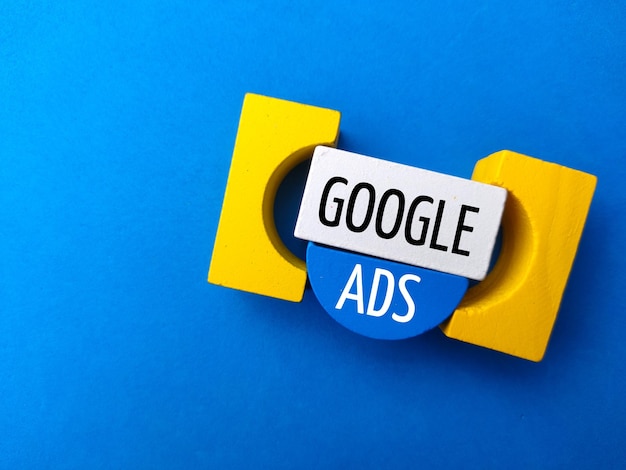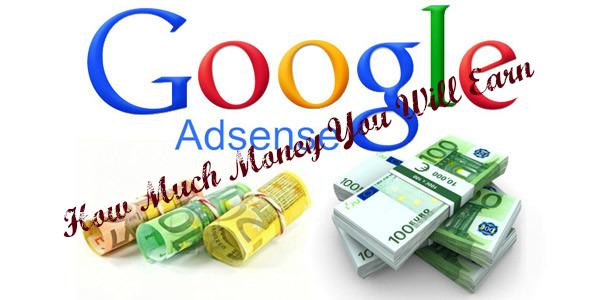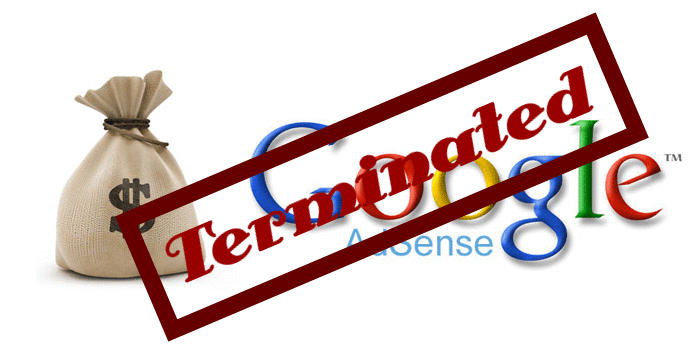In today’s digital world, creating an online presence is must for all types of businesses. With millions of potential customers actively searching the internet every day, harnessing the power of online advertising becomes essential. One such powerful tool is Google Ads.
Google Ads presents a tremendous opportunity for businesses to reach their target audience effectively and drive tangible results. By understanding the fundamentals, implementing best practices, and continuously optimizing your campaigns, you can harness the power of Google Ads to boost your online presence, drive traffic, and achieve your business goals. Embrace the world of digital advertising with Google Ads and watch your business soar to new height.
In this blog post, we’ll explore the fundamentals of Google Ads, its benefits, and how to maximize its potential to drive targeted traffic and boost your business’s success.
Understanding Google Ads
Google Ads, formerly known as Google AdWords, is an online advertising platform that allows businesses to create and display ads on Google’s search engine results pages (SERPs) and across its vast network of partner websites. With Google Ads, you can reach potential customers precisely when they are searching for products or services related to your business.
Benefits of Google Ads
1. Targeted Reach
Google Ads offers extensive targeting options, allowing you to reach specific geographic locations, demographics, interests, and even tailor ads to specific keywords or search terms. This precise targeting ensures that your ads are seen by the right audience, increasing the chances of conversions.
2. Cost Control
With Google Ads, you have full control over your budget. You can set daily spending limits, adjust bids, and choose between cost-per-click (CPC), cost-per-thousand-impressions (CPM), or other bidding strategies that align with your advertising goals.
3. Measurable Results
Google Ads provides robust analytics and reporting tools that give you insights into your campaign’s performance. You can track clicks, impressions, conversions, and other key metrics to assess the effectiveness of your advertising efforts and make data-driven decisions for optimization.
Getting Started with Google Ads
1. Campaign Structure
Begin by defining your advertising goals, whether it’s driving website traffic, generating leads, or increasing sales. Structure your campaigns into ad groups based on relevant keywords and themes. This organization allows for better control and optimization.
2. Keyword Research
Conduct thorough keyword research to identify the most relevant and valuable search terms for your business. Utilize keyword research tools and consider factors such as search volume, competition, and user intent to select the right keywords for your ads.
3. Compelling Ad Copy
Highlight unique selling propositions, include strong calls-to-action, and ensure your ad aligns with the landing page experience to improve conversions.
4. Landing Page Optimization
Create dedicated landing pages that align with your ads and provide a seamless user experience. Optimize your landing pages for speed, relevance, and clear call-to-action to maximize conversions.
Ongoing Optimization
1. A/B Testing
Continuously experiment and test different ad variations, landing pages, and targeting options to identify what works best for your audience. Use A/B testing to compare performance metrics and make data-driven decisions for optimization.
2. Conversion Tracking
Implement conversion tracking to measure the effectiveness of your campaigns. Set up tracking codes to monitor actions such as form submissions, purchases, or newsletter sign-ups. This data will help you understand which campaigns are driving the most valuable results.
3. Quality Score Improvement
Google assigns a Quality Score to your ads based on factors such as ad relevance, click-through rate (CTR), and landing page experience. Optimize your campaigns to improve your Quality Score, which can lower your costs and boost your ad’s visibility.
4. Regular Analysis and Refinement
Continuously analyze your campaign performance, identify trends, and refine your strategies accordingly. Adjust your targeting, ad copy, and bidding strategies based on the insights gained from your data analysis.
Why online presence is important?
In today’s digital age, establishing a strong online presence has become essential for individuals and businesses alike. Here are some key reasons why online presence is important.
1. Visibility and Reach
The internet provides a vast platform where you can reach and engage with a global audience. Having an online presence allows you to showcase your products, services, or personal brand to a much larger audience than traditional offline methods would allow. This increased visibility can lead to greater brand awareness and exposure.
2. Credibility & Trust
A well-established online presence lends credibility to your business or personal brand. When potential customers or clients search for information about you or your business, having a professional website, active social media profiles, positive customer reviews, and informative content creates trust and enhances your reputation.
3. Customer Engagement
The internet offers various channels for direct engagement with your target audience. Social media platforms, blogs, forums, and email marketing allow you to interact with customers, answer their queries, and build relationships. Engaging with your audience fosters loyalty and customer satisfaction, leading to repeat business and positive word-of-mouth recommendations.
4. Access to Information
Nowadays, consumers conduct online research before making purchasing decisions. An online presence provides an opportunity to share valuable information about your products, services, or expertise. By providing relevant and educational content, you can establish yourself as a trusted resource in your industry and influence consumer decision-making.
5. Competitive Advantage
In a highly competitive market, a strong online presence can give you an edge over competitors who have not fully embraced digital channels. By effectively utilizing search engine optimization (SEO), online advertising, and content marketing strategies, you can increase your visibility, outrank competitors in search results, and attract more customers.
6. Cost-Effectiveness
Compared to traditional forms of advertising and marketing, establishing an online presence is often more cost-effective. Social media platforms, email marketing, and content creation require minimal financial investment, yet they have the potential to reach a wide audience and yield significant returns on investment.
7. Business Growth and Expansion
An online presence can provide opportunities for business growth and expansion. E-commerce platforms enable businesses to sell products or services globally, reaching customers beyond their local markets. Online advertising campaigns can target specific demographics or geographic regions, facilitating targeted growth strategies.
8. Feedback and Market Insights
Online platforms allow you to collect valuable feedback from customers through reviews, surveys, and social media interactions. This feedback can provide insights into customer preferences, expectations, and areas for improvement, helping you refine your offerings and enhance customer satisfaction.
Types of Google Ads to Make Your Business Successful in 2023
In 2023, several types of Google Ads can help drive success for your business. Here are some of the best types to consider-
1. Search Ads
Search ads appear at the top of Google search results when users search for specific keywords related to your business. They allow you to target potential customers actively looking for products or services like yours. By crafting compelling ad copy and selecting relevant keywords, you can attract highly targeted traffic and increase conversions.
2. Display Ads
Display ads appear on websites within Google’s Display Network, reaching a wide audience across various websites, blogs, and mobile apps. These visually appealing ads can include images, videos, or interactive elements. Display ads are effective for brand awareness, remarketing, and reaching potential customers who may not be actively searching for your products or services.
3. Video Ads
Video ads are displayed on YouTube, which has a massive user base and high engagement. With video ads, you can leverage the power of sight, sound, and motion to tell your brand’s story, showcase products, or provide valuable content. YouTube’s targeting options allow you to reach specific demographics, interests, or users who have engaged with your channel or videos.
4. Shopping Ads
Shopping ads are ideal for e-commerce businesses. They appear at the top of search results with product images, prices, and relevant information. These ads can help drive qualified traffic to specific product pages on your website, increasing the likelihood of conversions. By syncing your product feed with Google Merchant Center, you can display accurate and up-to-date product information in your shopping ads.
5. App Campaigns
If you have a mobile app, app campaigns can help you drive app installations and engagements. With app campaigns, you can reach potential users across various Google properties, including search, display, YouTube, and Google Play. Google’s machine learning algorithms optimize your campaign to deliver ads to users who are more likely to install or engage with your app.
6. Local Campaigns
Local campaigns are designed to drive foot traffic to physical stores. These campaigns combine various Google ad formats and targeting options to reach potential customers near your business location. Local campaigns utilize location extensions, store visits tracking, and other features to connect with users searching for products or services in their local area.
7. Discovery Ads
Discovery ads allow you to showcase your products, services, or brand across Google Discover, YouTube Home Feed, and Gmail Promotions and Social tabs. These visually rich and personalized ads appear in a non-intrusive manner, reaching users during their moments of discovery and inspiration.
8. Responsive Search Ads
Responsive search ads automatically optimize your ad combinations to show the most relevant message to users. By providing multiple headlines and descriptions, Google’s machine learning tests different combinations to determine the most effective ad variations based on user search queries. Responsive search ads help increase ad relevance, improve click-through rates, and drive better performance.
Remember, the best types of Google Ads for your business depend on your specific goals, target audience, and industry. Consider your budget, campaign objectives, and the unique value propositions of each ad type to make informed decisions and maximize the impact of your advertising efforts. Regularly monitor and optimize your campaigns based on performance data to drive on-going success.
How to reach customer through app ads?
Reaching customers through app ads can be a powerful strategy to promote your mobile application, drive installations, and increase user engagement. Here are some key considerations and approaches for effectively reaching customers through app ads.
1. Define Your Target Audience
Identify your target audience based on demographics, interests, behavior, and other relevant factors. Understand who your ideal app users are to create more targeted and compelling ads that resonate with their needs and preferences.
2. App Store Optimization (ASO)
Optimize your app store listing to improve visibility and increase organic installations. Optimize your app’s title, description, keywords, screenshots, and app icon to attract potential users who are searching for apps similar to yours.
3. App Install Campaigns
Leverage Google Ads’ app install campaigns to reach users across various Google properties, including search, display, YouTube, and Google Play. Customize your ad creatives, calls-to-action, and targeting options to effectively promote your app and drive installations.
4. Ad Formats
Consider using different ad formats to capture users’ attention and generate interest in your app. This can include static or dynamic banners, interactive playable ads, video ads, or app promotion ads that showcase your app within other apps.
5. App Deep Linking
Implement deep linking within your app ads to direct users to specific screens or content within your app. deep linking enables a seamless transition from the ad to the relevant page within the app, enhancing the user experience and driving higher engagement.
6. Remarketing
Implement remarketing strategies to re-engage users who have previously interacted with your app. Set up remarketing campaigns to target users who have installed your app but have not engaged for a specific period or to encourage users who have uninstalled to return.
7. Ad Personalization
Utilize Google Ads’ machine learning capabilities to personalize your app ads based on user behavior, preferences, or past interactions. Tailor your messaging, visuals, and calls-to-action to make the ads more relevant and appealing to individual users.
8. Measurement and Optimization
Track key performance metrics, such as app installations, app opens, in-app purchases, or other desired actions. Utilize conversion tracking and in-app event tracking to measure the effectiveness of your app ads and optimize your campaigns for better results.
9. User Reviews and Ratings
Encourage satisfied users to leave positive reviews and ratings for your app. Positive reviews not only enhance your app’s credibility but can also influence potential users’ decision-making when considering installing your app.
10. Continuous Testing and Optimization
Regularly test different ad variations, targeting options, ad placements, and bidding strategies to identify what works best for your app. Analyze performance data, make data-driven decisions, and optimize your app ads to improve conversions and maximize return on ad spend.
By strategically utilizing app ads, you can effectively reach potential users, drive installations, and increase user engagement for your mobile application. Stay informed about industry trends, adapt to user preferences, and consistently optimize your app ad campaigns for on-going success.
Final Thought
By following these steps and continuously refining your Google Ads strategy, you can boost your online presence and achieve your business goals in 2023. Remember that online advertising & best cameras for streaming is an on-going process, and staying informed about the latest trends and updates in digital marketing will help you stay ahead of the competition.










Thanks, brother it’s very helpful for me.
Super Helpful!!!! thanks!!
The article is very informative and detailed. Got many points that i use in my campaigns. Thanks a lot!
From reading this, it’s apparent that simply has become the new actually.